Las Vegas Uber, Lyft Customers Say They Wait Too Long for Rides, Regulations Questioned
Posted on: April 6, 2021, 05:12h.
Last updated on: June 23, 2021, 02:06h.
Passengers are complaining that wait times for ride-hailing companies like Uber or Lyft are way too long at McCarran International Airport and other Las Vegas locations. The delays come as the number of tourists heading to casinos and hotels starts to increase and demand for rides edges up.

“We have seen periods of increased wait times for those utilizing rideshare at LAS,” said Joe Rajchel, a McCarran spokesman, to Casino.org on Monday.
Similar delays are found at Circa Resort & Casino’s Garage Mahal, located in downtown Las Vegas. Employees there have heard passenger concerns over wait times and cancellations, the Las Vegas Review-Journal reported.
“Lately, in Garage Mahal, especially on peak days, Friday, Saturday, Sunday, and Monday, upon checkout time, there’s higher wait times because of a shortage of cabs and Ubers,” Danny Suy, valet lead for the Circa Resort, recently told the Review-Journal.
It was also revealed in the report that the number of active ride-hailing drivers in Nevada is less than half of what it was a year ago, according to the Review-Journal.
As of March 30, there were 13,723 active ride-hailing drivers in Nevada. That compares to 36,482 on March 13, 2020.
State Pricing Approach Blamed
The delays faced by waiting passengers were blamed by some on pricing rules set by state officials. The regulations were implemented because of the COVID-19 emergency, which has been in place for over a year.
Ride-hailing services want to let drivers use surge pricing or dynamic pricing. Under such an approach, when there is very high demand, prices may increase. If passengers do not want to pay the higher rate, they can pass on the ride and wait to see if rates have gone down.
These alternate pricing systems would encourage drivers to go to areas in Las Vegas where there is increased demand.
But the Nevada Transportation Authority prohibits such practices during emergencies declared by state officials.
“Due to the long-term state of emergency … in Nevada, state regulation currently prevents rideshare companies from using dynamic pricing to incentivize drivers during periods of high demand,” an Uber spokesperson told Casino.org.
“This inadvertently impacts driver earnings and rider reliability,” the spokesperson added.
“We are working hard to meet demand. However, due to Nevada’s state of emergency and regulation preventing transportation networking companies from incentivizing drivers, there’s an impact on rider experience and driver earnings,” a Lyft spokesperson was quoted similarly by the Review-Journal.
Still, Uber told Casino.org it was “excited to see ridership rebounding in Nevada.” Lyft similarly told the Review-Journal there are “big increases in demand for rides, as vaccines roll out and people get ready to start moving again.”
Nevada Legislation Introduced
To remedy the situation, one Nevada legislator, state Sen. James Settlemeyer, R-Minden, has introduced SB 279. That law would let Uber and Lyft enact surge pricing in emergencies.
Piper Overstreet, a lobbyist for Uber, told the Nevada Independent, “As our state is safely loosening restrictions and increasing access to vaccines, we’re seeing a dramatic increase in demand.”
The bill would let Uber and similar companies “adjust supply to meet that demand,” she added.
When asked to comment on the situation, Stephen M. Miller, director of UNLV’s Center for Business and Economic Research, agreed there are a supply and demand issue impacting Nevada’s ride-hailing sector.
“The ride-hailing industry in Las Vegas … experienced significant adjustment problems with the COVID-19 recession, where visitor volume fell from 3.8 million in February 2020 to 121 thousand in April 2020 (seasonally adjusted), recovering to 3.8 million in January 2021 (seasonally adjusted),” Miller said.
Such induced swings in demand for ride hailing cause similar big swings in supply,” Miller explained. “The market response during the recent recovery in visitor volume typically would involve price increases.”
But he confirmed that surge pricing is prohibited because of the emergency declared by state officials.
Miller also points out the recovery of the ride-hailing sector could be slowed because some drivers are receiving unemployment payments. That has delayed their return to work.
“The unemployment benefits may actually outstrip what they could earn as a driver right now, with tourism numbers where they are,” David Newton, a Nevada Transportation Authority commissioner, told the Review-Journal.
Related News Articles
Most Popular
Mirage Las Vegas Demolition to Start Next Week, Atrium a Goner
Where All the Mirage Relics Will Go
Most Commented
-
Bally’s Facing Five Months of Daily Demolition for Chicago Casino
— June 18, 2024 — 12 Comments
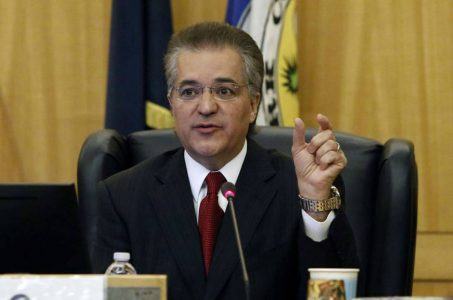


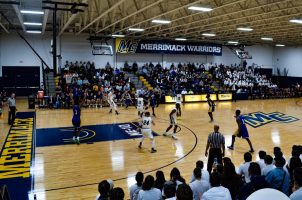





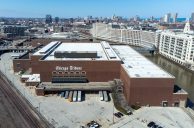




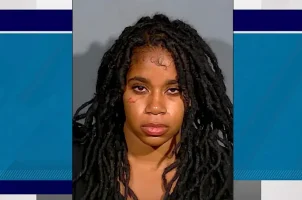
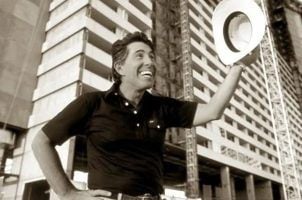
Last Comments ( 22 )
@Buddha - we cannot see your badges. At least, not on Lyft anyway. There are many factors why people get canceled on. I only cancel when I'm forced to, which is usually because I've been driving non-stop for 5 hours and I MUST stop to use the bathroom. The app isn't user friendly for quick breaks, we are forced to cancel.
I have driven for Lyft for a little over 3 years. I don't drive nearly as much as I used to (I have a full time job) because Lyft keeps paying less. It's confusing to me, because drivers pay 100% of gas, car washes, and maintenance, not to mention extra insurance for being rideshare drivers. What expenses does Lyft have?? But they take over 50% of every ride. So less drivers are out there, and customers are piling up. You would think Lyft would get a clue and fix the issue by giving meaningful bonuses and incentives. On top of that, I'll get texts from people saying "Please don't cancel on me, the last 3 drivers canceled and I can't be late for work, please I'll give you a BIG tip!!" But they never do. I always laugh out loud when I get those texts. Less than 10% of ALL passengers give any tip at all. We drive for FREE to pick you up, and lots of times people take the 5 full minutes to come outside, with an attitude, demanding to know why it took so long to get a ride. I'm sick of it. Too much work for too little pay, and waaaay too much attitude from people. I'm over it. Eventually people are just going to have to resort back to getting completely ripped off by taxis again.
I have a top tipper badge on my rider profile as a lyft user. I wonder if it helps with getting rides?
I make more money in doordash then I would driving people around. Don’t get me wrong There’s good and bad days. If you want more Uber and Lyft drivers on the street you guys should pay more it don’t cost nothing to pay more. People who work Lyft and Uber have expenses as well. Nothing ain’t free that’s what Uber and Lyft don’t understand.
Barry I understand what you are saying but when we say we are waiting out side that you guys say ok then cancel that is wrong
The problem With UBER AND LYFT IS YHEY HAVE LOWERED THE DRUVERS CANCELATION FEES AND EACH YEAR HAVE LOWERED THE MILLAGE THEY PAY DRIVERS WHILE THERE CO. BONUSES AND Cost of living raises keep going up They also have increased the percentages they take from each ride
When I do my lyft at 10pm and don't get off tell 11pm and they find someone and it said 25min then when it said 2min then they cancel I had to wait for one hour they need to fix this problem
Well finally uber and lyft get what they deserve! First of all if your going to get a tight wat rider who wants to pay cents on a dollar for a ride guess what buddy start walking because we as drivers have expenses like GAS,MAINTENANCE AND WEAR AND TEAR ON THE CARS SO if you can't pay CORRECTLY guess what start walking because it's bad enough that uber and lyft gets more than 50% doing nothing! So good luck tight wats I'm sure alot of drivers here agree!
Well finally uber and lyft get what they deserve! First of all if your going to get a tight wat rider who wants to pay cents on a dollar for a ride guess what buddy start walking because we as drivers have expenses like GAS,MAINTENANCE AND WHERE ARE TEAR SO if you can't pay CORRECTLY guess what start walking because it's bad enough that uber and lyft gets more than 50% doing nothing! So good luck tight wats I'm sure alot of drivers here agree!
Welcome to what happens when we don't get enough pay most dont realize we have to have ride share insurance to be covered plus tires gas brakes car cleaning these are our dam cars so stop acting so entitled and start tipping us man you might get a ride
I'm a Lyft driver and have been one for almost 3 years. I have been through 5 paycuts, and 3 rental increases. I'm out driving 6 days a week and do a minimum of 100 the rides a week. To the passenger Lyft pays me .15 cents a minute and .39 cents a mile. Just because you pay x for a ride doesn't mean driver receives x. Most times I receive about 40% of what the ride costs you. I drive to you for free, when I arrive to you BE READY!!!!! Every minute I am outside waiting is just another minute you got me for free on my time. Be considerate of MY CAR just because you are paying for the ride doesn't mean you get to do as you please in MY CAR! Stop filing false complaints on driver's because you are too cheap to pay 5.00 cancel fee. Don't ask us to break the rules Lyft has in place. Wear your damn mask. If I have too than you do too. Take the time to realize we are REAL people just like you trying to take care of our families. You don't want to wait longer wait time's than treat us with the same respect you demand us to treat you with, tip your driver's, and above all tell Lyft to pay the driver.
This is happening because the city destroyed the taxi businesses and then customers were always complaining about their prices..Which by the way, were established by the city officials.After all, drivers pay for gas, car extra insurance, taxi authority fees, and companies are taking a half of their earnings...No tip, no living wages...So waiting times become longer..
I’m a Uber driver & Lyft to all you people complaining know one never say what we drivers get paid and a lot of drop off zones we can not drive in . Customers not tipping customers have attitude customers keep us drivers waiting long time for pickup they are in considerate of our time upon arrival. I had a customer tell me that he was just getting dressed. The time it takes us drivers to get to a customers it’s plenty of time to watch your phone & be ready to go. When we travel out of town to a airport we are in traffic depending on time of request plus tolls we have to pay tolls coming back . So please to all you customers out there think of us drivers & be considerate & tip after all we are in the service industry.
I got an idea. Take a Taxi. Oh yeah I forgot Uber has put the taxi companies out of business by undercutting the prices so much. The problem with surge prices is that drivers don't want to drive unless there is a surge. So customers are stuck paying an inflated price or wait even longer. When I go to Chipotle at 10:30 a.m. and no one is there, the burrito still cost the same as it does during the lunch rush. Image paying S30 for a burrito at noon and only $2 at 3pm. In Orlando I've seen the price surge to $30 a mile. If a Taxi driver would change you that much he could be in big trouble. Taxis are regulated and the prices are set by the city.
It’s because Uber and Lyft don’t want to pay their drivers!!!!!!!!!! They keep more than 50% of what the customer pays which is greedy af.